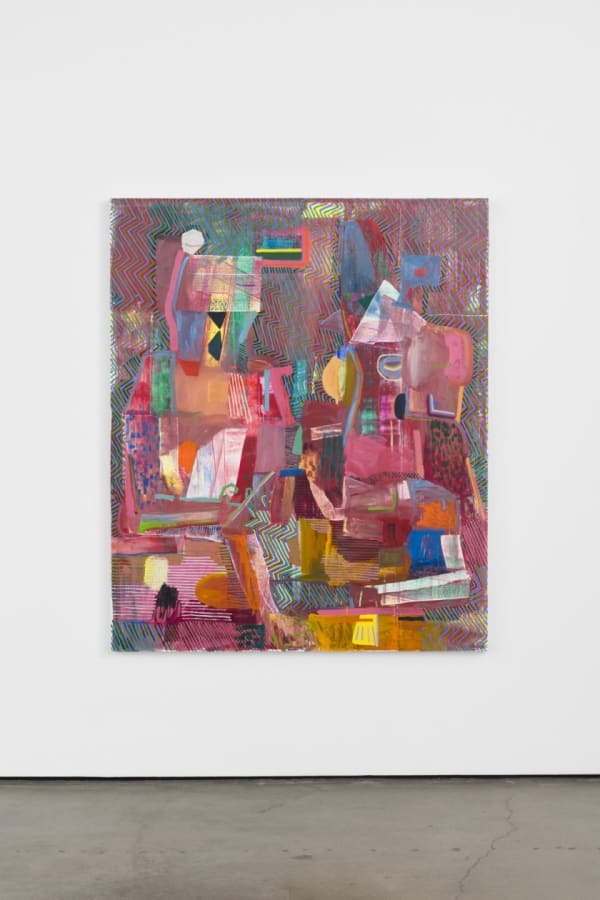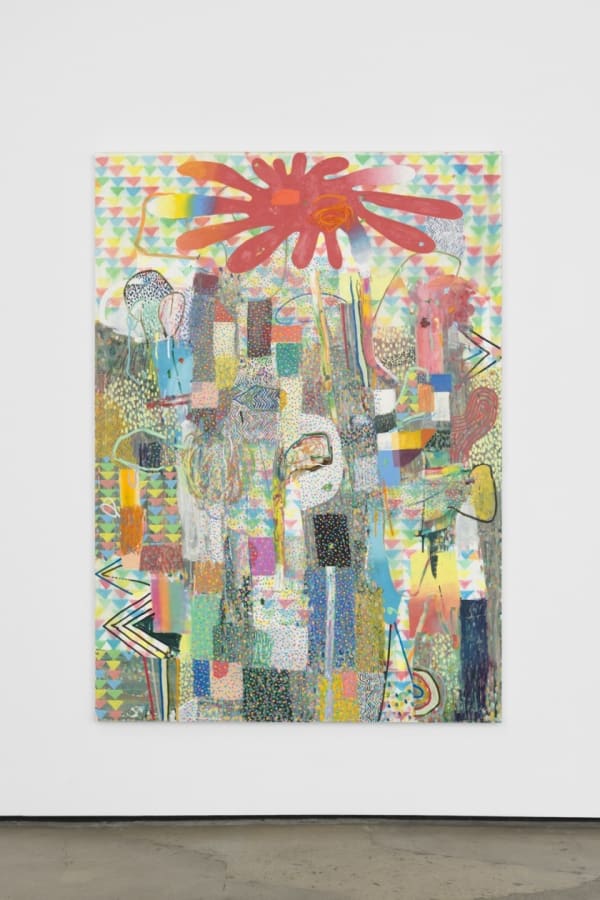When the suburbs were invented, real estate was more plentiful than it is now and neighborhoods spread out. That kind of sprawl represented a new way of organizing homes and businesses. It was fundamentally different from the way they were packed together in urban centers — cheek by jowl and stacked atop one another.
It’s an even stranger way to organize a painting. But that’s exactly what Tomory Dodge has done in eight great paintings at Philip Martin Gallery in Culver City.
The L.A. artist’s idiosyncratic abstractions are fresh and jaunty, spreading out across mid- to large-size canvases to make spaces rarely seen in contemporary art. Dodge’s compositions resemble newly built subdivisions: precise and tidy — with no repairs or revision. At the same time, his unfussy, seemingly off-the-cuff paintings are lively and stimulating, animated by unpredictable juxtapositions.
Each is a patchwork composition, made up of a dozen or more boldly patterned patches. Think crazy quilts, but in oil on canvas.
Any of his striped, polka-dotted or zigzagged patterns could be the compositional bedrock of a single painting. But Dodge prefers to toss disparate configurations and colors into the mix, creating visual rhythms that invite the eye to dance every which way. The mind scrambles to keep pace.
Dodge’s paintings also take you back to what Picasso and Braque were doing from 1912-14, when they invented Synthetic Cubism to reassemble the pictorial space they had deconstructed with Analytical Cubism. Dodge’s quasi-figurative pictures also hark back to the pointillism of Georges Seurat and Paul Signac, another short-lived but influential movement focused on the way vision works.
But the more significant — if less expected — precedent for Dodge’s compositions is the art of John Baldessari. The L.A. Conceptualist’s enlarged and repurposed B-movie stills often spread across the wall, sometimes in multi-part configurations, never overlapping another but leaving space for its neighbors. Making odd bedfellows of art from the last three centuries, Dodge’s light-handed canvases play fast and loose with expectations to invite us to see things differently.




